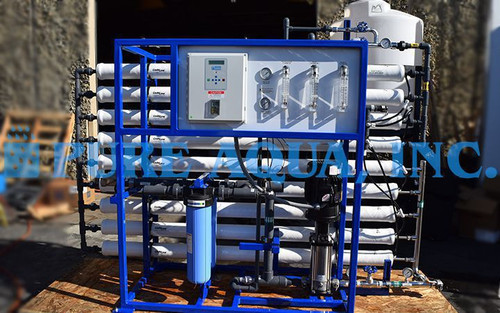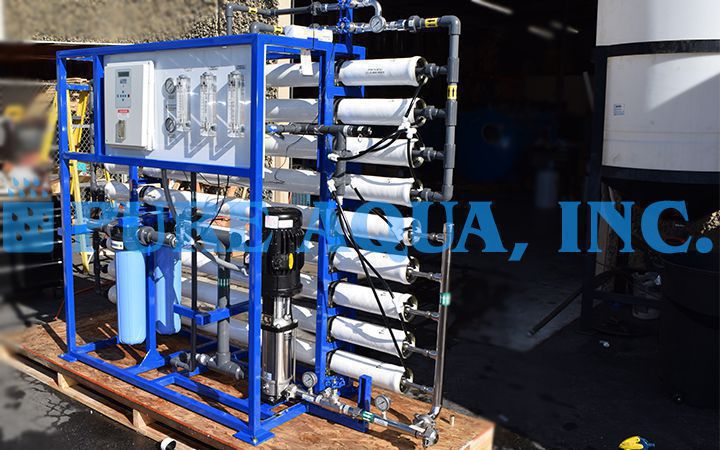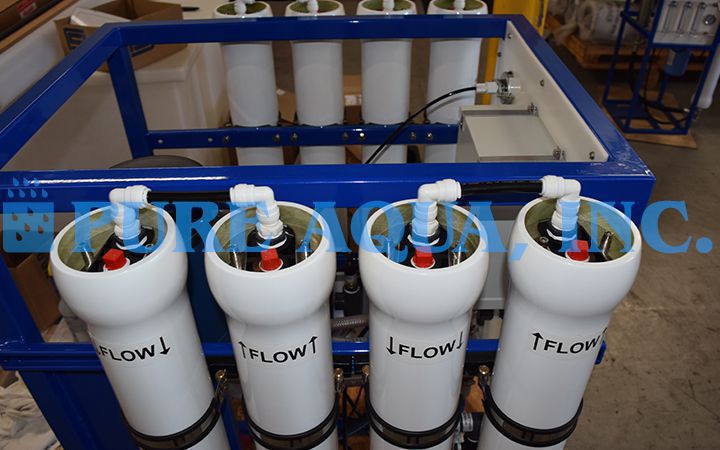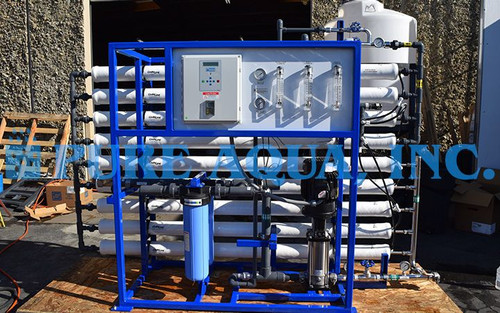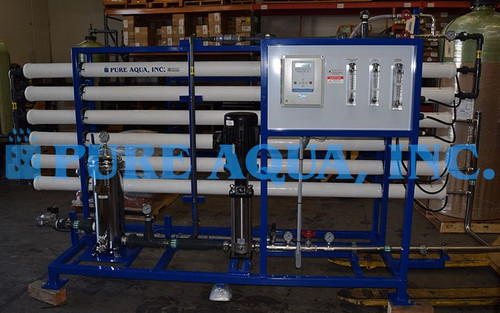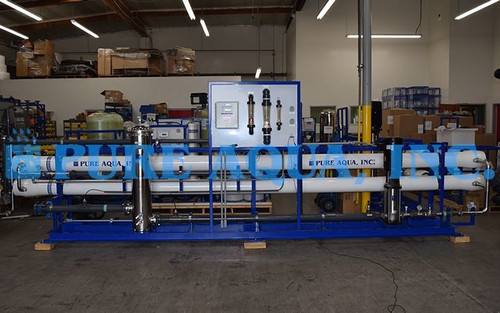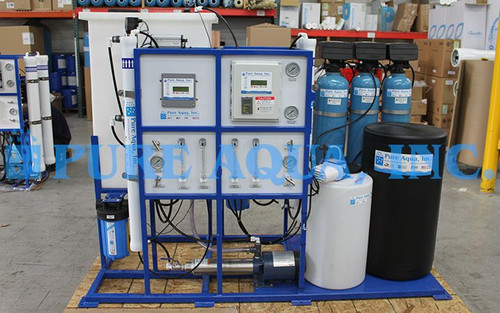Overview: Reverse Osmosis (RO) systems have several different flow configurations that allow the user to get the most out of their system. This system is designed where the permeate of one system becomes the feed to another reverse osmosis system to increases the system recovery rate, an important environmental factor that was a priority for the customer.
Industry: Boiler Feed
They invested on a Pure Aqua TW-27K-9240 (1st Pass) and TW-12K-840 (2nd Pass) RO system and will be able to increase system recovery rate from 68% if they only have 1- pass system to 88.8% with the Double Pass RO system. That is an increase of almost 21% which is a big win for both their company and the environment.
- NEMA 12 enclosure
- Low pressure switch
- High pressure switch
- Liquid filled pressure gauges
- Permeate conductivity monitor
- Permeate & concentrate flow meters
- Powder coated carbon steel frame
- 4” TFC spiral wound membranes
- Stainless steel multi-stage pump with TEFC motor
- FRP membrane housing
- 5 micron cartridge prefilter
- 460V/3Ph/60Hz power supply
- Microprocessor based control panel
- Programmable time delay and set points
- Status indicators
- Motor starter
[custom-specifications]
Water Concern: Pure Aqua also had been working with a food manufacturing company based in Santa Fe Springs, CA. specialized in packaged meat products. Their plant has 6-units of 50 HP (300 HP total). Both companies were initially fed with a Softened Santa Fe Springs City water which is quite high in TDS. This should be fine if their manufacturing process generates good amount of steam condensate that can be used to mix with softened city water and eventually lower the total TDS of the feed water into the Steam Boilers. However, they mostly have direct- steam injection process that has 0% return condensate into the steam system.
The challenge for both companies is to minimize or eradicate the wet steam plaguing the plant due to high TDS and corrosion issues on steam line due to boiler water carry-over. Not to mention high cost of boiler chemicals, energy lost on blow-downs and water wastage that came along with it.
This challenge called for a study to put in an RO- system and lower down the feed water TDS drastically for the steam boiler plant to be able to:
a. Increase Boiler Cycles-of-Concentration and less blow down
b. Decrease Energy lost on boiler water during blow down
c. Decrease volume wastage on the blow down
d. Eradicate wet-steam issues and steam line corrosion
[/custom-specifications]
[custom-features]
Applied Solution: Pure Aqua Inc. had been working with a Steam Boiler company known for their energy efficiency with lots of success in proving their Fuel-to-Steam efficient boiler design saved money for the end-users in cost of operations. However, just as any other steam boilers in the industry, they also had some challenges with regards to water usage efficiency which is mostly dependent on the water quality of the source in each of their customer’s location.
They asked the assistance of Pure Aqua Inc. to design a Double Pass RO system which they can maximize water recovery instead of just proposing a Single Pass RO system which is quite limited in system recovery by design. This plan will add more advantages into the overall plan. Examples include:
e. Savings on Water Usage
f. Savings on Sewage Fee
g. Environmentally friendly
[/custom-features]
[custom-usage]
Low operating cost, compact size, reduced footprint, and high quality production of freshwater.
[/custom-usage]
[custom-documents]
[/custom-documents]
-
The right solution
So glad I bought this DPRO system
 ENGLISH
ENGLISH ESPAÑOL
ESPAÑOL العربية
العربية PORTUGUÉS
PORTUGUÉS FRANÇAIS
FRANÇAIS
